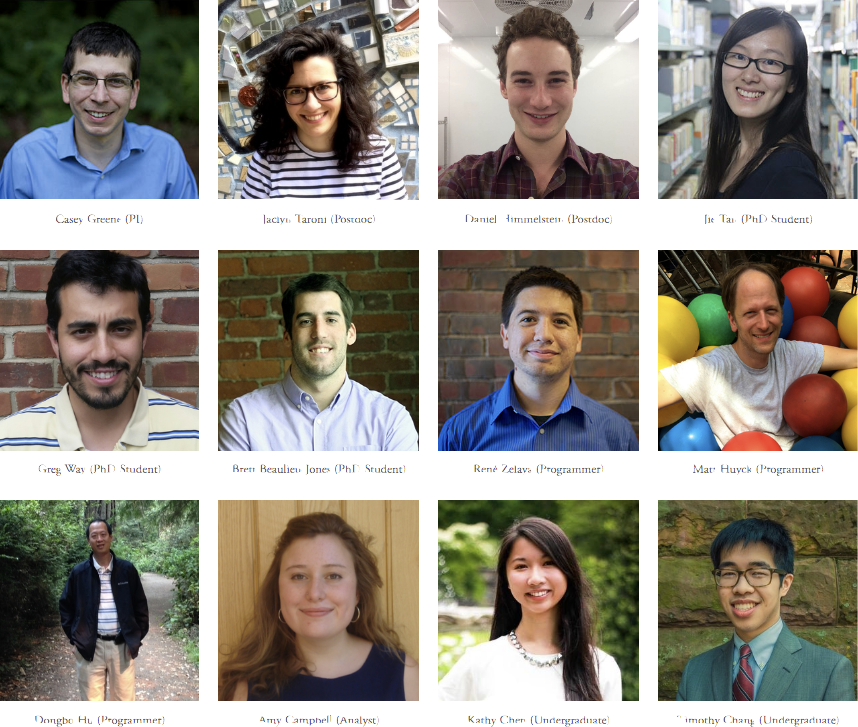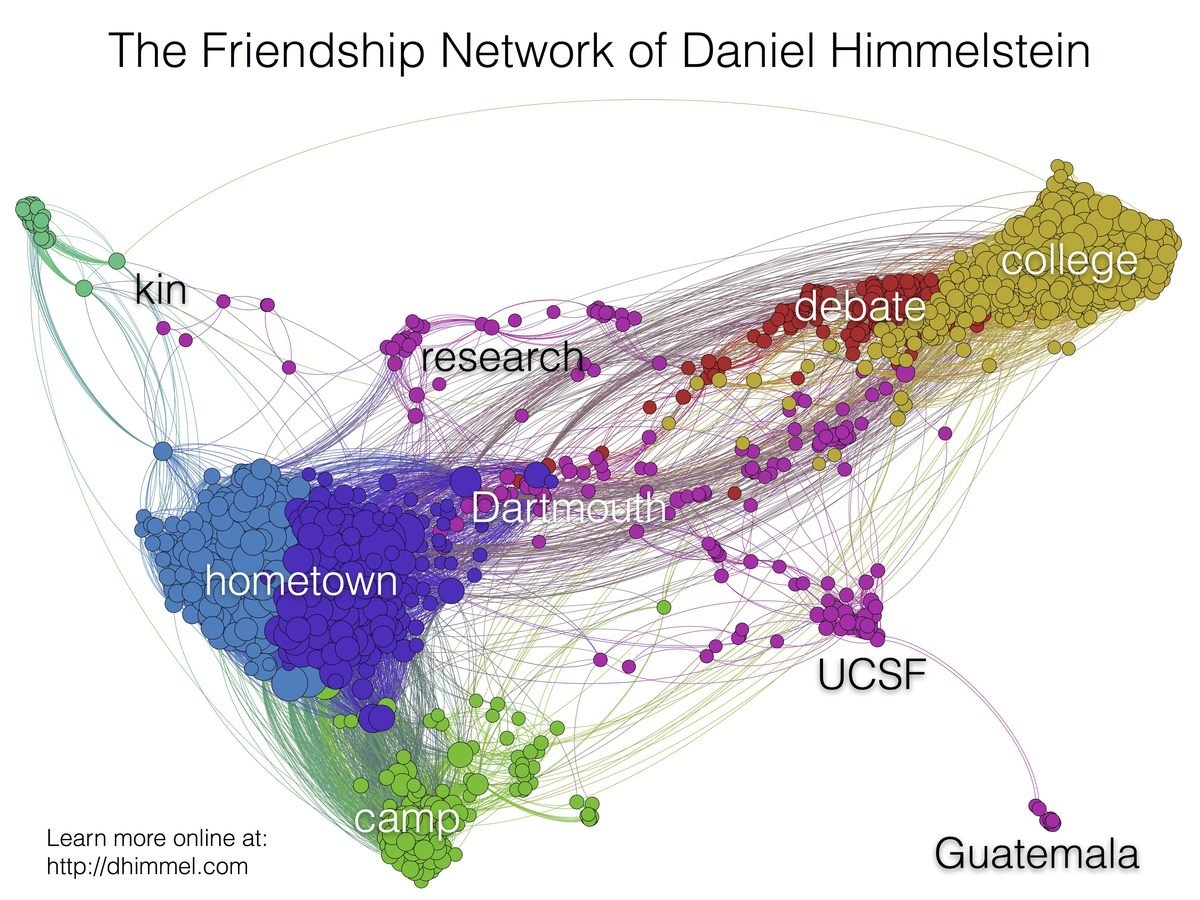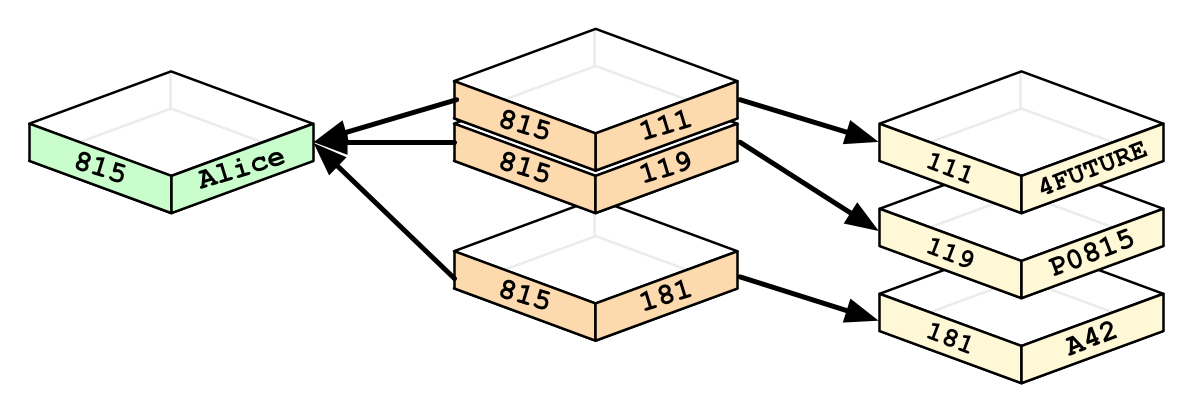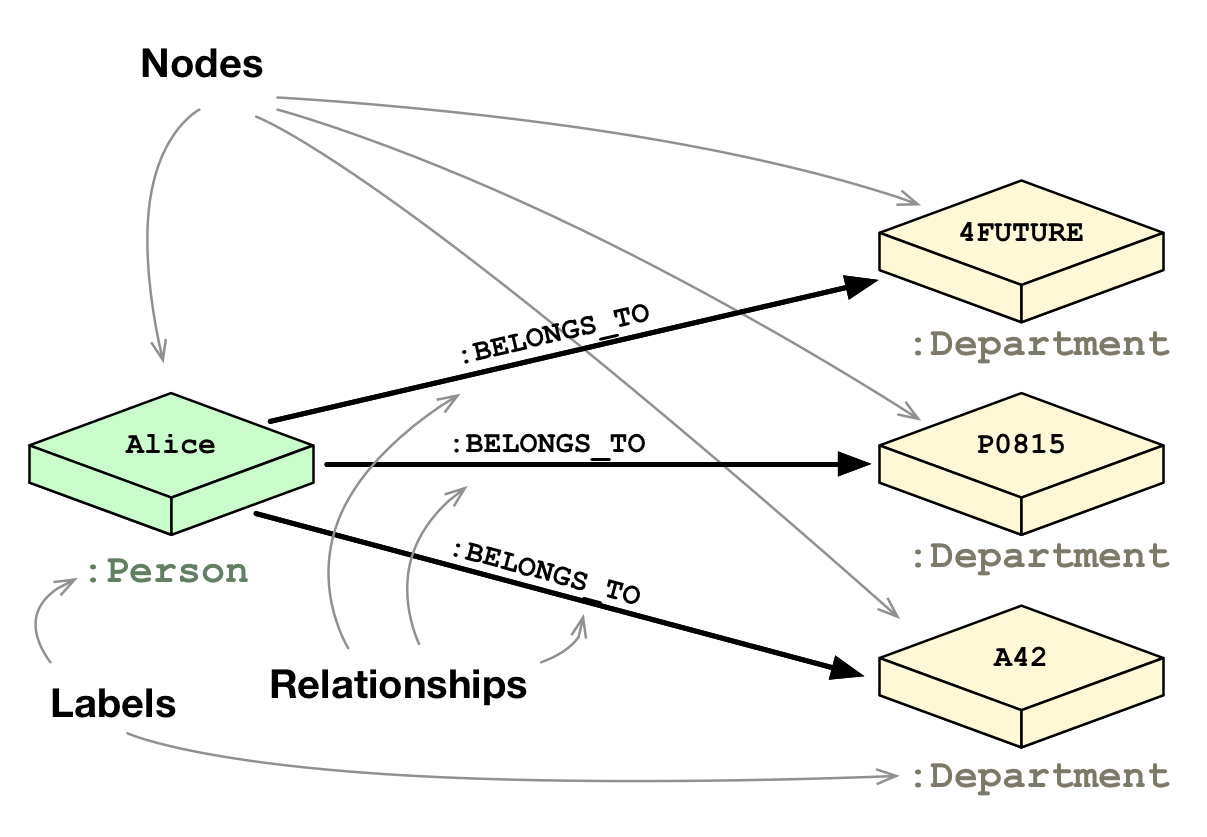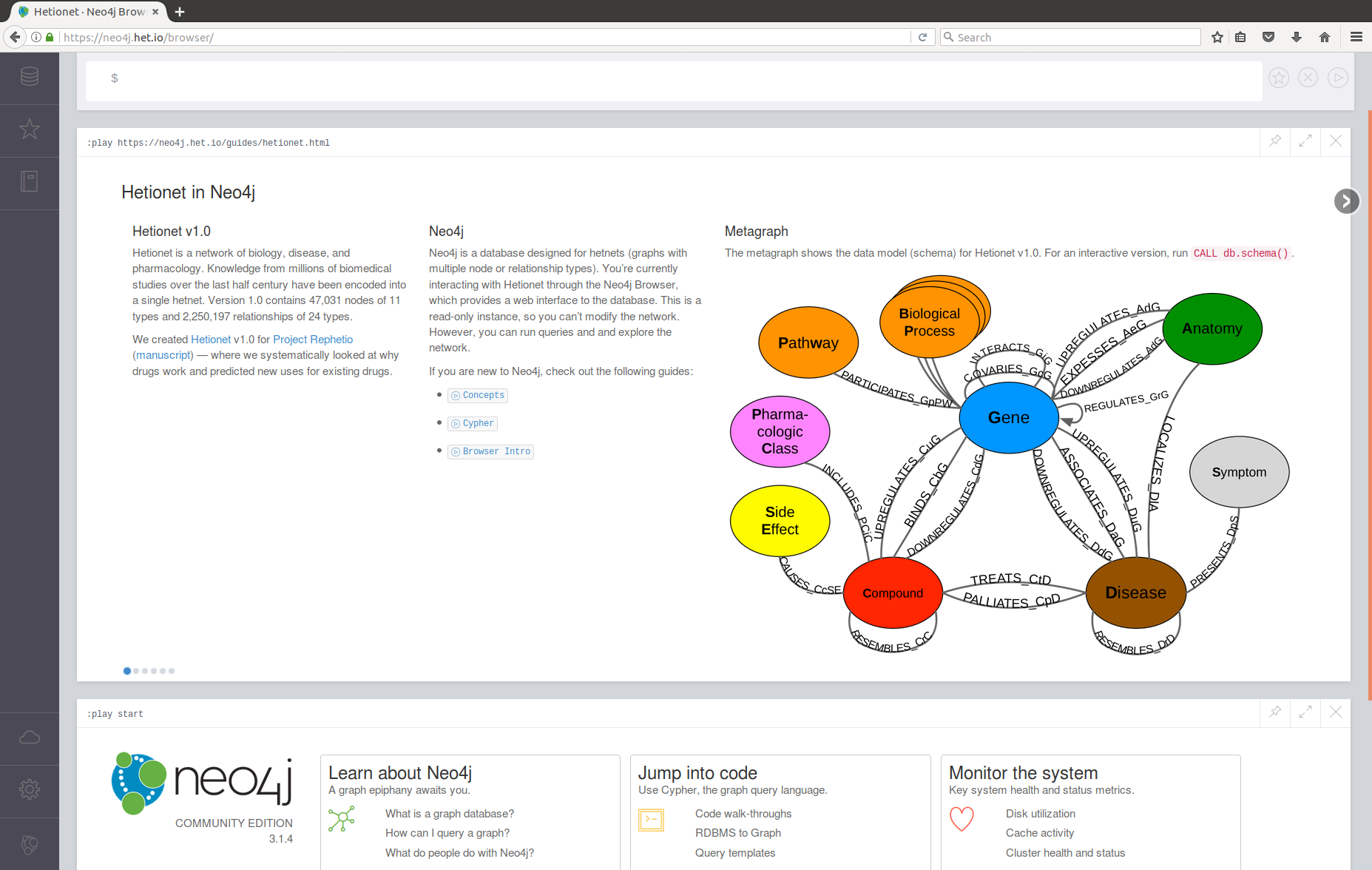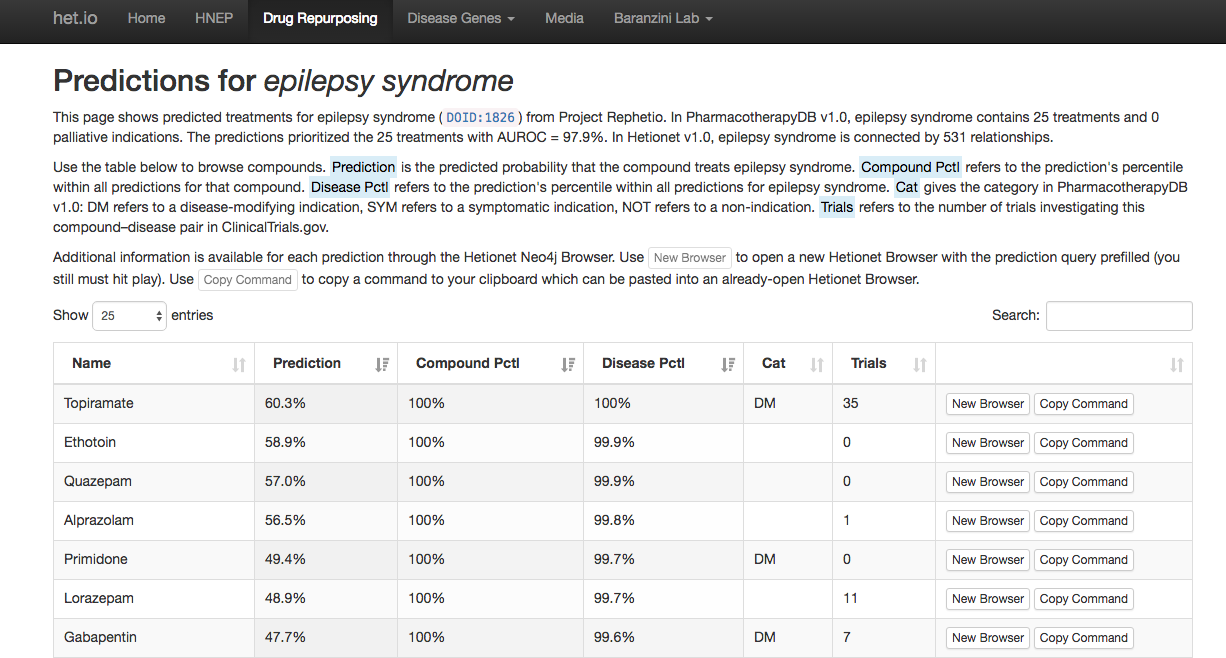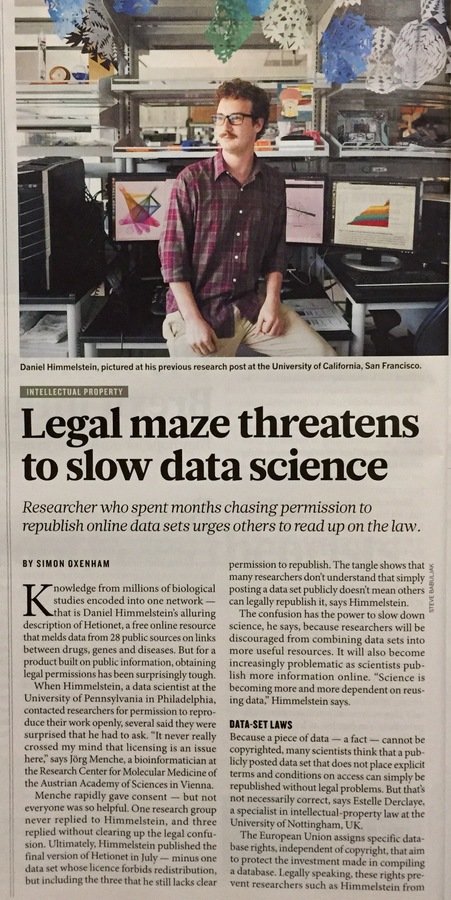The hetnet awakens in Philadelphia.
biology ⭃ network
DataPhilly Meetup
Papadakis Building, Room 120
June 6, 2017
Slides at slides.com/dhimmel/dataphilly
The hetnet awakens: understanding complex diseases through data integration and open science
Greene Lab
I'm a data scientist
http://www.greenelab.com/
DataPhilly Talk Abstract:
Hetnets are networks with multiple node and relationship types. He will discuss when hetnets are the right tool for integrating and analyzing diverse types of data. Specifically, he'll showcase Project Rephetio, which predicts new uses for existing drugs. This project created Hetionet, a network with 2.25 million relationships of 24 types, allowing researchers to ask questions that span the many realms of biomedical knowledge.
About Daniel Himmelstein:
Daniel Himmelstein is a "digital craftsman of the biodata revolution" who works in the Greene Lab at Penn. In 2016, he received his PhD in Biological & Medical Informatics from UCSF. Daniel leads the Cognoma (DataPhilly) Datathon and was a finalist for "Scientist of the Year" in the 2016 Philly Geek Awards. His research focuses on integrating open data to uncover the secrets of human health.
https://www.meetup.com/DataPhilly/events/240213100/
How I became intestested in graphs
http://blog.dhimmel.com/friendship-network/
My Facebook friendship network in 2014

Graphs are composed of:
- Nodes
- Relationships
Nodes / relationships have type:
- node labels
(person, course, university) - relationship types
(lecturer, institution)

- first_name: Daniel
- last_name: Himmelstein
- twitter: @dhimmel
- SSN: 012-34-5678

- catalog: CIS550
- title: Database & Information Systems
- units: 5
- catalog: EPID600
- title: Data Science for Biomedical Informatics
- units: 1

- url: www.upenn.edu
- founded: 1740
- type: private
- league: ivy




- grade: A-
- grade: B
- grade: F

What can we do with this graph?
- Course statistics:
How many students are in CIS 550?
- Course recommendations:
What courses do other students in CIS 550 take?
- Course scheduling:
What room should a course be in so it's nearby other courses that its students are enrolled in?
networks with multiple node or relationship types
multilayer network, multiplex network, multivariate network, multinetwork, multirelational network, multirelational data, multilayered network, multidimensional network, multislice network, multiplex of interdependent networks, hypernetwork, overlay network, composite network, multilevel network, multiweighted graph, heterogeneous network, multitype network, interconnected networks, interdependent networks, partially interdependent networks, network of networks, coupled networks, interconnecting networks, interacting networks, heterogenous information network
A 2012 Study identified 26 different names for this type of network:
hetnet
Source: From Relational to Neo4j
The Relational Database Model
Source: From Relational to Neo4j
The Relational Database Model
Limitations:
- Relationships require an intermediate table
- Schemas are cumbersome to create to maintain
Source: From Relational to Neo4j
Relationships inherently form graphs
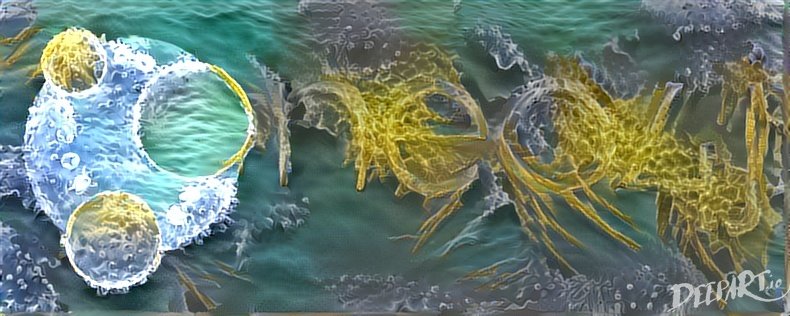
What's the best software for storing and querying hetnets?
| dhimmel/hetio | |
|---|---|
| 86 | |
| 5 | |
| 2 |



| neo4j/neo4j |
|---|
| 42,498 |
| 3,071 |
| 1,007 |
GitHub stats from 2016-10-09
How do you teach a computer biology?

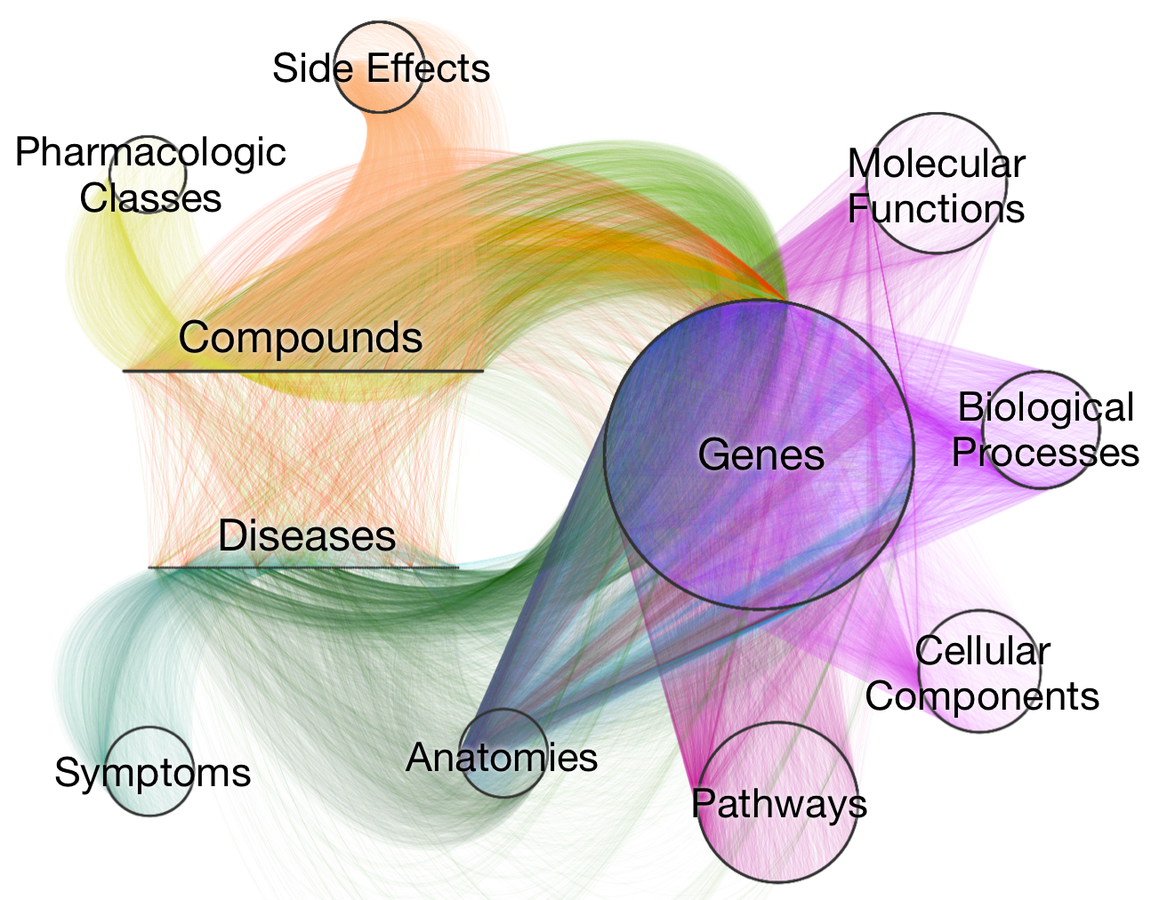
Visualizing Hetionet v1.0
- Hetnet of biology for drug repurposing
- ~50 thousand nodes
11 types (labels)
- ~2.25 million relationships
24 types
- integrates 29 public resources
knowledge from millions of studies
Hetionet v1.0
- Nodes
- standardized vocabularies
- stable, unambiguous identifiers
- Relationships:
- Omics scale required
- Literature mining
- High throughput experimental technologies
- Avoid manual mapping
- Versioned data dependencies with GitHub commit hash URLs
pandas-dev/pandas#14576
Constructing Hetionet v1.0
>>> import phd

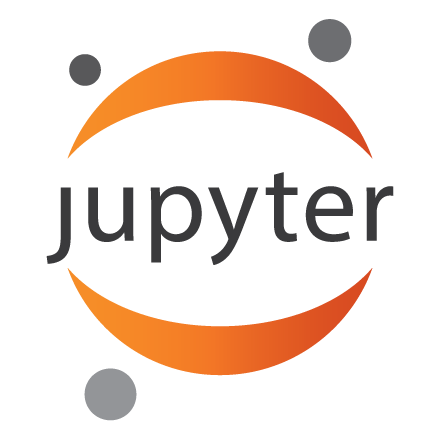
- Customized Docker image
- Digital Ocean droplet
- SSL from Let's Encrypt
- readonly mode with a query execution timeout
- Custom GRASS style
- Custom guides
Public Hetionet Neo4j Instance
Details at doi.org/brsc
MATCH path =
// Specify the type of path to match
(n0:Disease)-[e1:ASSOCIATES_DaG]-(n1:Gene)-[:INTERACTS_GiG]-
(n2:Gene)-[:PARTICIPATES_GpBP]-(n3:BiologicalProcess)
WHERE
// Specify the source and target nodes
n0.name = 'multiple sclerosis' AND
n3.name = 'retina layer formation'
// Require GWAS support for the
// Disease-associates-Gene relationship
AND 'GWAS Catalog' in e1.sources
// Require the interacting gene to be
// upregulated in a relevant tissue
AND exists(
(n0)-[:LOCALIZES_DlA]-(:Anatomy)-[:UPREGULATES_AuG]-(n2))
RETURN pathHow could multiple sclerosis could affect retina layer formation?
More queries at thinklab.com/d/220
Project Rephetio contributions on Thinklab
(see thinklab.com/p/rephetio/leaderboard)
Project Rephetio: drug repurposing predictions
-
Hetionet v1.0 contains:
- 1,538 connected compounds
- 136 connected diseases
- 209,168 compound–disease pairs
- 755 treatments
- Systematic drug repurposing:
- Compare the therapeutic utility of data types
- Identify the mechanisms of drug efficacy
- Predict the probability of treatment for all 209,168 compound–disease pairs (het.io/repurpose)
- Project online at thinklab.com/p/rephetio
Systematic integration of biomedical knowledge prioritizes drugs for repurposing
Daniel S Himmelstein, Antoine Lizee, Christine Hessler, Leo Brueggeman, Sabrina L Chen, Dexter Hadley, Ari Green, Pouya Khankhanian, Sergio E Baranzini
bioRxiv. 2016. DOI: 10.1101/087619

features = metapaths
observations =
compound–disease pairs
positives = treatments
negatives =
non-treatments
Machine learning methodology
Predictions succeed at prioritizing known treatments

Project Rephetio: Does bupropion treat nicotine dependence?
- Bupropion was first approved for depression in 1985
-
In 1997, bupropion was approved for smoking cessation
- Can we predict this repurposing from Hetionet? The prediction was:
- 99.5th percentile for nicotine dependence
- probability 2.50-fold greater than null

Compound–causes–SideEffect–causes–Compound–treats–Disease

Compound–binds–Gene–binds–Compound–treats–Disease

Compound–binds–Gene–associates–Disease

Compound–binds–Gene–participates–Pathway–participates–Disease
MATCH path = (n0:Compound)-[:BINDS_CbG]-(n1)-[:PARTICIPATES_GpPW]-
(n2)-[:PARTICIPATES_GpPW]-(n3)-[:ASSOCIATES_DaG]-(n4:Disease)
USING JOIN ON n2
WHERE n0.name = 'Bupropion'
AND n4.name = 'nicotine dependence'
AND n1 <> n3
WITH
[
size((n0)-[:BINDS_CbG]-()),
size(()-[:BINDS_CbG]-(n1)),
size((n1)-[:PARTICIPATES_GpPW]-()),
size(()-[:PARTICIPATES_GpPW]-(n2)),
size((n2)-[:PARTICIPATES_GpPW]-()),
size(()-[:PARTICIPATES_GpPW]-(n3)),
size((n3)-[:ASSOCIATES_DaG]-()),
size(()-[:ASSOCIATES_DaG]-(n4))
] AS degrees, path
RETURN
path,
reduce(pdp = 1.0, d in degrees| pdp * d ^ -0.4) AS path_weight
ORDER BY path_weight DESC
LIMIT 10Cypher query to find the top CbGbPWaD paths
Try at https://neo4j.het.io
Browse all predictions at het.io/repurpose. Discuss at thinklab.com/d/224
Top 100 epilepsy predictions & their chemical structure
Discuss at thinklab.com/d/224#5
Top 100 epilepsy predictions & their drug targets
Discuss at thinklab.com/d/230#14
Nice of you to share this big network with everyone; however, I think you need to take care not to get yourself into legal trouble here. …
I am not trying to cause trouble here — just the contrary. When making a meta-resource, licenses and copyright law are not something you can afford to ignore. I regularly leave out certain data sources from my resources for legal reasons.
One network to rule them all
We have completed an initial version of our network. …
Network existence (SHA256 checksum for graph.json.gz) is proven in Bitcoin block 369,898.
-
Hetionet (≤ v1.0) integrated data from 31 resources:
- 5 United States Government works
- 12 openly licensed
- 4 non-commercial use only
- 9 were all rights reserved
- 1 explicitly & contractually forbid reuse
-
Requested permission for 11 resources:
- median time to first response was 16 days
- 2 affirmative responses
-
Other considerations:
- who owns data
- incompatibilities: share alike vs non-commercial
- copyright status of data & fair use
- Solution: license attribute per node/relationship
Legal barriers to data reuse
Recommendations:
- release data under an open license
- University researchers: commit to open in your resource sharing plan

https://github.com/cognoma/cognoma
Advertisement: Cognoma Meetup with DataPhilly & Code for Philly
Next meetup:
June 27

